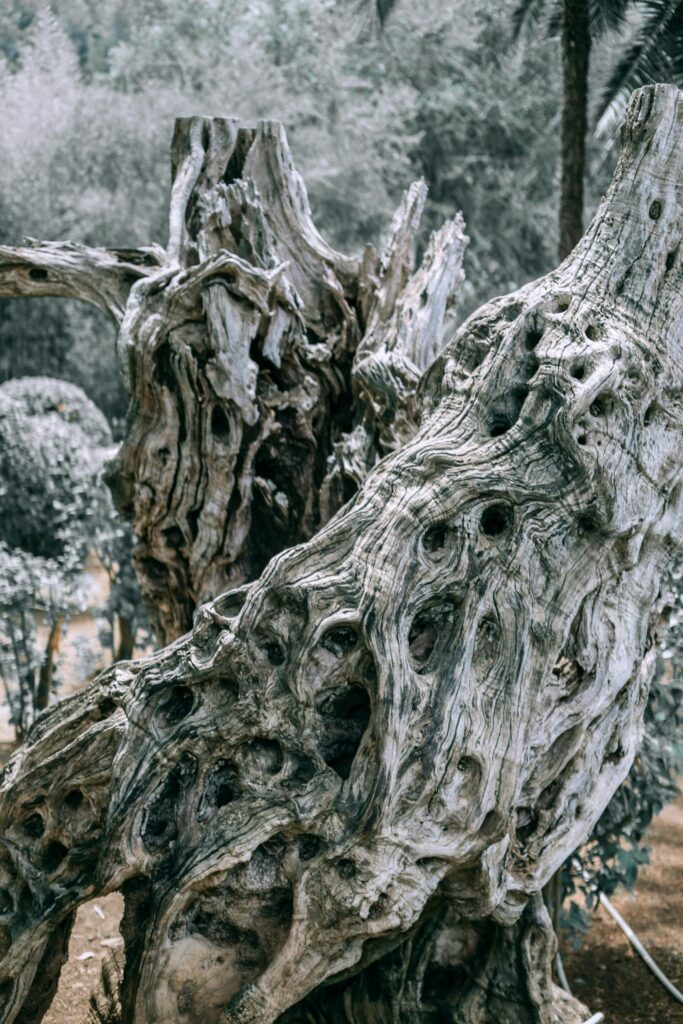
Identifying and Addressing Common Tree Diseases in Orlando FL
Tree diseases are a clear indication of poor overall tree health. This is because they occur when the cambium layer of a tree is damaged, preventing the flow of water and nutrients up to the leaves for photosynthesis to take place.
These diseases typically manifest as wilting leaves, discoloration of the foliage, and leaf dieback that works from the tip of a branch upward. Some of the most common diseases include:
Fusarium Wilt
Fusarium wilt is one of the most common and serious tree diseases. It’s a fungus that causes vascular clogging which prevents water and nutrients from flowing freely up the trees. This disease can lead to tree death if not treated.
The fungus usually winters as chlamydospores or conidia in the soil or on infected crop residue. Chlamydospores penetrate the roots, and then the fungus spreads in the root system by growing upward as mycelium and plugging xylem tissue. Symptoms of wilting, discoloration and death follow the infection.
Obtaining and planting disease-resistant cultivars can help reduce the inoculum levels of this pathogen. Practicing crop rotations for 3-5 years also helps minimize the number of inoculum spores in the soil. Also, washing tractors and equipment between fields can help to eliminate the movement of infested soil to other fields. click here for more: http://orlandofltreeservice.com
Oak Wilt
Symptoms include dark streaks of slime that ooze from tree bark. The streaks bleed when pressed against, and the ooze typically carries an unpleasant odor. This disease spreads through xylem-feeding sap beetles (Coleoptera: Nitidulidae) that are drawn to fresh wounds on oaks, such as those caused by pruning cuts or storm damage.
Oak wilt is caused by the fungus Ceratocystis fagacearum. It moves from infected trees to healthy ones in two ways: overland and underground. Overland spread is facilitated by the same beetles that carry the disease from one tree to another, and it can also move through root grafts between oaks of the same species.
To prevent the spread of this disease, prune and trim oaks only in late summer or fall. This will minimize the number of fresh wounds that attract the beetles that carry the fungus. Also, when pruning or trimming oaks during the growing season, use a tree wound dressing or latex paint to seal the cuts.
Cypress Canker Disease
Cypress canker disease is a serious and widespread conifer disease caused by one or more of three species of the fungal pathogen Seiridium. Symptoms include dieback of branches and twigs, which may lead to tree death. The infection can also cause a sticky coating of honeydew on the foliage that is attractive to insects such as bees and wasps.
While there are no cypress trees that are completely resistant to the disease, certain cultural practices can greatly reduce their susceptibility. For instance, planting cypress in well-drained soils and avoiding over-fertilization can help to prevent the disease.
The fungus survives in damaged twigs or branches, and during wet weather spores are released that spread to nearby plants by splashing water or wind. The fungus can also be transported long distances on pruning tools or infected nursery stock. The infection reaches epidemic levels in sites with climatic conditions suited to the pathogen and high density of susceptible plants.
Laurel Wilt
Laurel wilt (LW) is one of the most devastating new diseases affecting laurel family (Lauraceae) trees. It is caused by the fungus Raffaelea lauricola, a fungal mutualistic symbiont of the invasive redbay ambrosia beetle (Xyleborus glabratus). This beetle transmits this pathogen from tree to tree via its saliva. Once the disease is in a tree, its vascular system becomes plugged with tyloses and gums, preventing water from flowing through the trees to their leaves and stems. Trees will then begin to wilt and die, usually within a few weeks to a few months.
Laurel wilt can be detected by observing discoloration of the outer sapwood of a tree. This staining can be dark blue-brown to black and appears uneven, whereas normal sapwood is white to yellowish. A grove owner can also detect a tree with LW by inspecting the trunk and major limbs for signs of damage including discoloration. Prophylactic treatment of presymptomatic LW-detected trees with systemic fungicide propiconazole has been effective in managing the disease and reducing costs to grove owners.